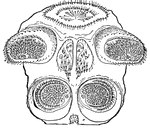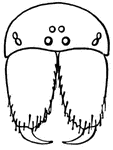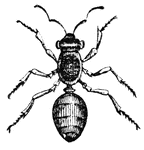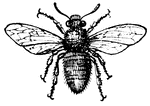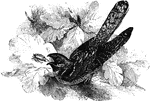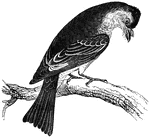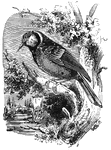
Scorpion
Scorpions are found in warm climates, reaching their greatest size in tropical America and Africa.
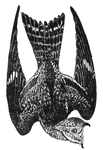
Nighthawk
The nighthawk is fit for catching insects on the wing by their very wide mouth, the gape extended far…
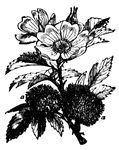
Gall
This spongy gall is found on various species of roses, and is produced by several insects as receptacles…

Beetle
Beetles are members of the Coleopterans, the largest order of insects. They are distinguished by a hard…

Beetle
Beetles are members of the Coleopterans, the largest order of insects. They are distinguished by a hard…
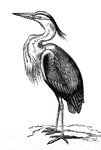
Heron
These wading birds mostly spend their time wading about in shallow water, feeding upon small fishes,…
Smooth Caterpillar
The body is cylinder and divided by rings into thirteen segments. The smooth caterpillars don't have…

Hairy Caterpillar
Caterpillars are an insect that is cylinder and is divided by rings into 13 segments. The hairy caterpillar…

Spanner Caterpillar
Caterpillars are insects that are cylinder and are divided by rings into 13 segments. The spanner caterpillar…

Glow Worms
The glow worm is from the species serricorn beetles. Segments of their bodies are luminous, hence glow…
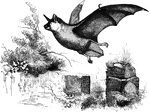
Silesian Bat
Vespertilio Limnophilus. A bat of the Genus Vespertilio, which are small and numerous. They are voracious…

Particolour Bat
Vespertilio Discolor. A bat of the Genus Vespertilio, which are small and numerous. They are voracious…
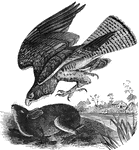
Common Buzzard of Europe
"B. vulgaris is twenty-two inches long, the head is large and the body heavy. Above, the color…
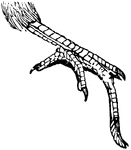
Foot of a Goat-Sucker
The foot of a goat-sucker, with a distinctively longer middle toe, believed to be used for either grasping…

Night Hawk
Found in America, Mexico and the West Indies, this species averages nine to ten inches in length and…
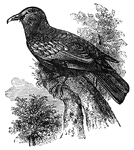
Common Roller
The common roller, which subsists on a diet of fruits and insects. It builds its nests in the holes…

Black-Banded Dacelo
The black-banded dacelo, found around the Cape of Good Hope. They are known for feeding on earthworms,…
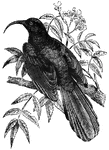
Namaqua Bee-Eater
The namaqua bee-eater, native to Western Africa. Its diet consists of insects, particularly bees and…
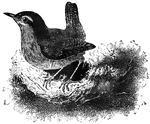
Common European Wren
Common throughout Europe, the European wren frequents hedges, gardens and bush places. They feed primarily…
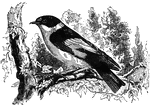
Collared Flycatcher
The collared fly-catcher, a bird which feeds on insects and the occaisional small vertebrate.

Blackbird
Black with a yellow bill, the blackbird feeds mostly on larvae, snails, worms, insects, and fruits.
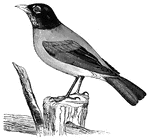
American Robin
The American Robin (known as the migratory thrush among naturalists) feeds on small insects and various…
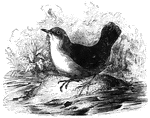
Black Dipper
The black dipper, also known as the European water-ousel, feeds on small shellfish and insects.

Meadow Pipit
Also known as the titlark, the meadow pipit prefers to live on steep and arid slops, subsisting on a…
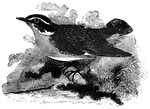
Whinchat
The whinchat is a migratory European bird, which subsists on a diet of worms, insects, small shell-mollusks,…
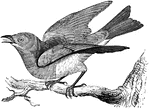
Bluebird
The bluebird feeds on a diet of insects and spiders in the summer and berries in the winter. It usually…
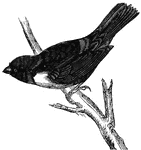
Scarlet Tanager
The scarlet tanager (also known as the black-winged summer redbird, or fire bird) feeds on insects,…

Common Sparrow of Europe
Often found among human settlement, the common sparrow of Europe's diet consists of seeds, insects,…
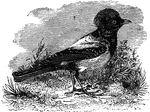
Rose-Colored Pastor
Resembling a starling, the rose-colored pastor can often be found living in the vicinity of livestock,…

Meadowlark
Known in Virginia as the old-field lark, the meadow-lark is a migratory bird that feeds on insects and…
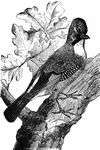
European Jay
The European jay is common through Europe, feeding on vegetables and fruits, as well as on insects and…
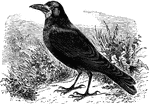
Rook
Greatly resembling the common crow, the rook is approximately nineteen inches in length and feeds on…

Chough
Also known as the red-legged crow, the chough is about sixteen inches in length, feeding on insects,…
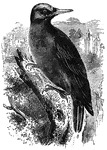
Great black Woodpecker
Chiefly making its habitat in Northern Europe, the great black woodpecker uses its long, sharp bill…
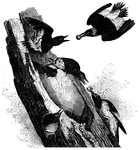
Redheaded Woodpeckers
The most common type of woodpeckers found in the United States, the red-headed woodpecker feeds on various…
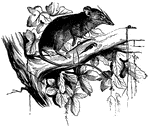
Rostrated Tarsipede
"A small, pretty, mouse-like animal, about three inches long, having a rostrated or beak-shaped snout,…
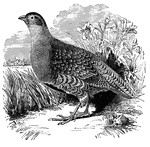
Common Partridge of Europe
The common partridge of Europe, or gray partridge, is found throughout Europe, Asia, and Africa. Its…
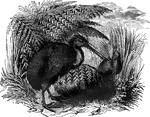
Kiwi
Also known as the apteryx, the kiwi bird posses a long, slender bill, which it uses for feeding on insects…
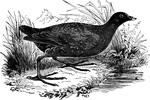
Moorhen
Also known as the waterhen, the moorhen lives around rivers and lakes, feeding on worms, insects, mollusca,…
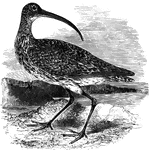
Curlew
Distinguished by a long, slender bill which curves downward, the curlew feeds mostly on worms, slugs,…
